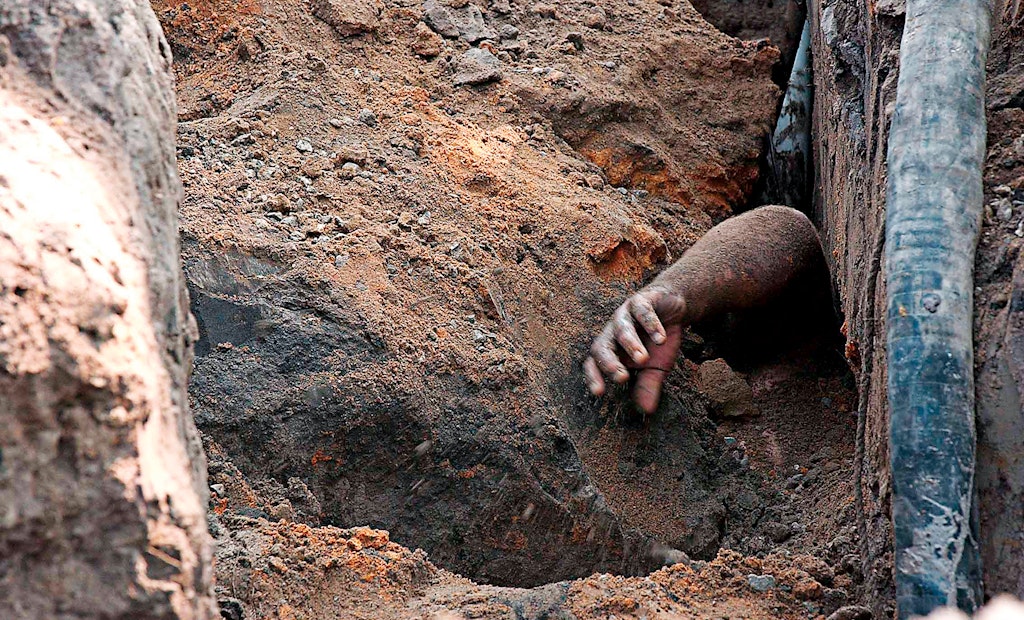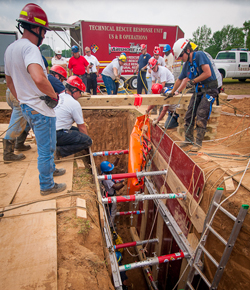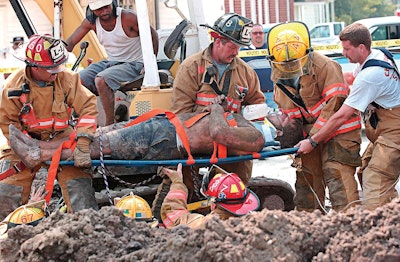
Interested in Education/Training?
Get Education/Training articles, news and videos right in your inbox! Sign up now.
Education/Training + Get Alerts
 Let’s assume your employer (a company or a utility) has an excellent safety program. You’ve been trained and designated as the competent person on project excavation sites. All the workers on your crew have been appropriately trained. You use trench-protection systems on your job sites. You have an emergency plan in place, and so on.
Let’s assume your employer (a company or a utility) has an excellent safety program. You’ve been trained and designated as the competent person on project excavation sites. All the workers on your crew have been appropriately trained. You use trench-protection systems on your job sites. You have an emergency plan in place, and so on.
Let’s also assume that another contractor at another site nearby the one you’re working on has taken a few shortcuts. Suddenly, one of that contractor’s workers comes yelling, “A man’s been buried! We need your help! There’s been a cave-in!”
What do you do? Here are some suggestions:
- Stay calm.
- Take charge of the job site until a trained team, headed by an “Incident Commander” (the term often used by firefighters and rescue/recovery teams), arrives.
- Safely get everyone who is not trapped out of the trench. Account for all workers.
- Call 911 and/or the company’s rescue team, and report the cave-in. If the construction site is difficult to find, designate someone to meet the trained rescuers at a readily identifiable address or landmark, and direct them to the cave-in location.
- Keep everyone who is not directly involved in the rescue/recovery at least 100 feet from the trench or excavation.
- Shut down all equipment, except pumps that are being used to remove water in the immediate vicinity of the cave-in.
- Stop or reroute traffic that might create vibrations and cause a secondary cave-in.
- Do not attempt to dig the victim out with a backhoe or excavator. Such equipment may further injure the victim.
- Do not remove the victim’s tools or equipment. They can be helpful in locating the victim.
In addition, the following information should be gathered:
- Number of workers trapped
- Where the victim(s) was last seen
- The time the cave-in occurred
- The depth of the trench
- The soil type
- An estimate of how much soil has collapsed on the victim
- The presence of any potentially harmful atmospheres
- The location and condition of all underground utilities
There may be a very strong temptation to jump down into the trench and try to dig the victim out. Do not do it. Untrained or ill-equipped rescuers frequently become victims themselves from secondary cave-ins.
Of course, the one thing that’s better than all these measures is avoiding a cave-in in the first place. Do it right the first time, so that a rescue is never necessary.
Remember: Use protection ... It will save your life.
 About the author
About the author
David Dow is chair of the training committee of the North American Excavation Shoring Association (NAXSA) and co‑founder and vice president of TrenchSafety and Supply, Inc. NAXSA was formed in July 2014 with the core purpose of promoting the safe and effective use of excavation shoring equipment and practices. The ultimate goal of the association is zero deaths and injuries in the excavation construction industry. For more information, visit www.naxsa.com.
This article and all photos are copyright © 2016 TrenchSafety and Supply, Inc. Used with permission of TrenchSafety and Supply, Inc., for this specific article.






